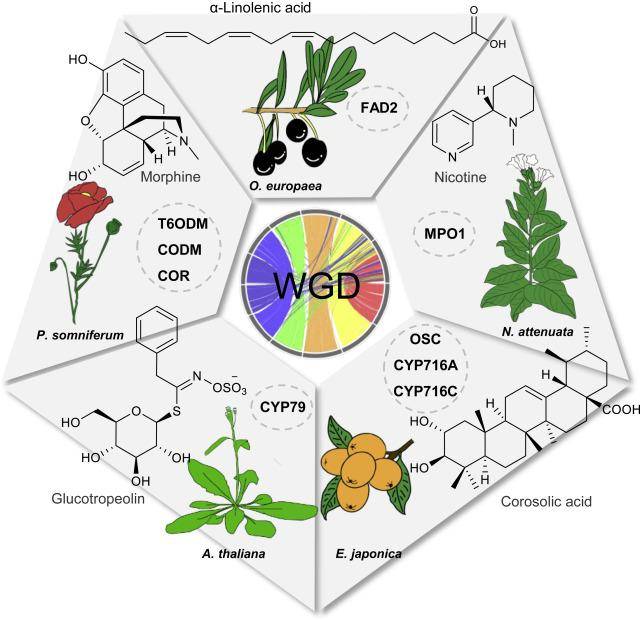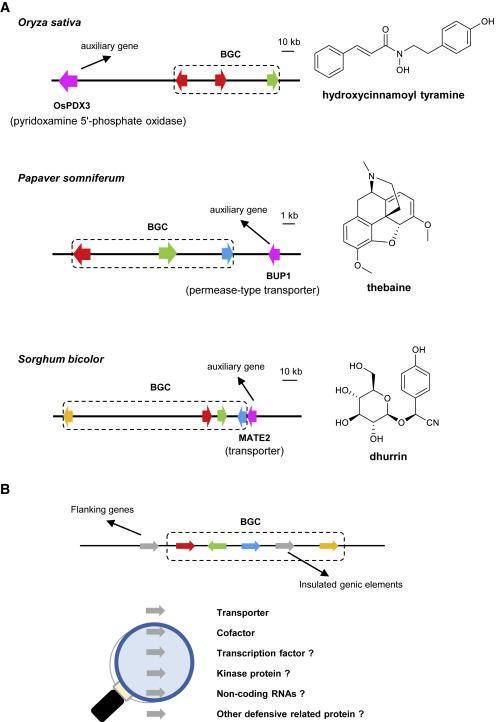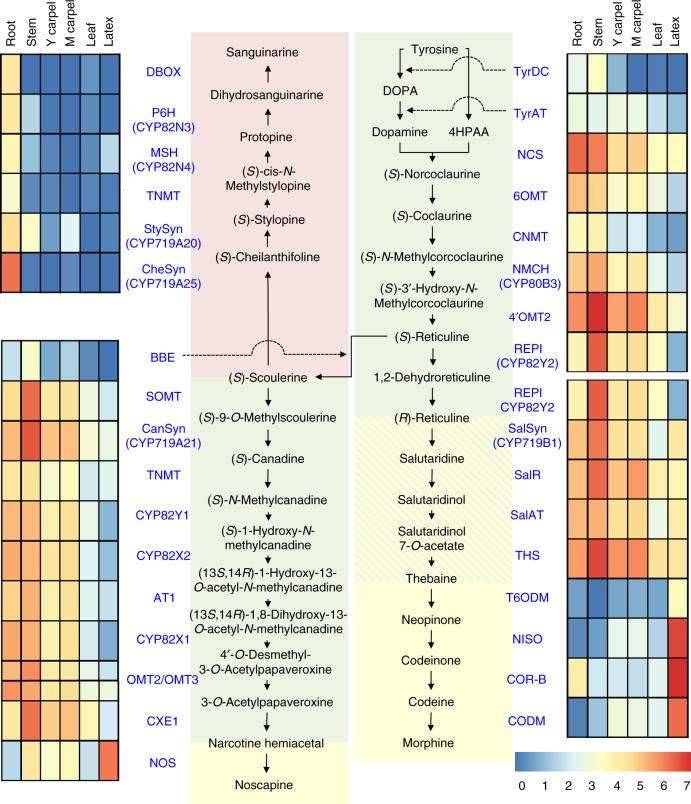What is Secondary Metabolism?
Secondary metabolism, alongside developmental and stress tolerance studies, constitutes three prominent realms of research in the field of plant sciences. Plant secondary metabolites serve as critical adaptations to their environment, arising from plant interactions with both biotic and abiotic stresses during extended periods of evolutionary processes.
Pangenomic Foundations of Plant Secondary Metabolic Diversity
The research delves into the identification of genes and whole-genome duplications (WGD) as classical catalysts for the diversity of metabolic pathways in plants, with biosynthetic gene clusters (BGCs) acting synergistically as drivers. The impact of WGD on metabolic diversity has been substantiated across numerous model organisms, including Arabidopsis thaliana, tobacco, poppy, olive, as well as several other model and economically significant species. Comparative genomic and pan-genomic sequencing studies, particularly those that focus on intraspecific variation, have elevated our understanding of the molecular underpinnings of metabolic diversity to an unprecedented level.
For instance, in species like Arabidopsis thaliana, ancestral gene duplications give rise to zygotic gene copies that evolve functionally to fuel metabolite diversity. Pan-genomic research has revealed correlations between the compact arrangement of triterpenoid biosynthesis gene clusters in natural populations of Arabidopsis thaliana and chromosomal inversions. In rice, the presence-absence variations (PAVs) in key secondary metabolism genes, such as TPS28, CYP71Z21, and CYP71Z2, have led to variations in ricinolein content across different rice lines.
 Whole genome duplication (WGD) underlies metabolic diversification in plants. (Zhou et al., 2022)
Whole genome duplication (WGD) underlies metabolic diversification in plants. (Zhou et al., 2022)
 Biosynthetic gene clusters and auxiliary genes. (Zhou et al., 2022)
Biosynthetic gene clusters and auxiliary genes. (Zhou et al., 2022)
Morphinan and Narcotine Synthesis Pathways through Chromosome-Level Genomic
In their study, the authors harnessed Hi-C data to augment the existing genome map of opium poppy, simultaneously embarking on the sequencing of ten distinct poppy species with varying alkaloid profiles, creating a comprehensive pan-genomic dataset. This research brought forth a complete elucidation of the genomic locations and gene expressions underpinning the vital genes within the Benzylisoquinoline Alkaloid (BIA) pathway.
 Genes involved in BIA biosynthesis in six tissues of the opium poppy. (Li et al., 2020)
Genes involved in BIA biosynthesis in six tissues of the opium poppy. (Li et al., 2020)
Furthermore, the study provided an extensive exploration of the intricate connections between BIA gene clustering and distribution, gene copy number variations (Ploidy-Associated Variations - PAV and Copy Number Variations - CNV), and gene (co-)expression, all within the context of alkaloid content in diverse poppy varieties. Ultimately, the research unveiled a significant discovery: the deletion of the T6ODM tandem repeat gene cluster corresponded to the absence of morphine and codeine in the respective poppy varieties.
The era of pan-genomic research has dawned, facilitated by cost-effective and efficient sequencing technologies. A promising avenue for exploration lies in reevaluating alterations within metabolic pathways (MVA, MEP, BIA, etc.) and pivotal gene families (CYP450s, UGTs, etc.) associated with essential products of secondary metabolism (flavonoids, terpenoids, alkaloids, etc.). This can be accomplished by scrutinizing samples from diverse individuals on a larger scale, considering variants such as Ploidy-Associated Variations (PAV), Copy Number Variations (CNV), Structural Variants (SV), and more, with the ultimate goal of uncovering the genetic foundations that underlie these differences.
References:
- Zhou, Xuan, and Zhenhua Liu. "Unlocking plant metabolic diversity: A (pan)-genomic view." Plant Communications (2022).
- Li, Qiushi, et al. "Gene clustering and copy number variation in alkaloid metabolic pathways of opium poppy." Nature communications 11.1 (2020): 1190.
For research purposes only, not intended for clinical diagnosis, treatment, or individual health assessments.


 Sample Submission Guidelines
Sample Submission Guidelines
 Whole genome duplication (WGD) underlies metabolic diversification in plants. (Zhou et al., 2022)
Whole genome duplication (WGD) underlies metabolic diversification in plants. (Zhou et al., 2022) Biosynthetic gene clusters and auxiliary genes. (Zhou et al., 2022)
Biosynthetic gene clusters and auxiliary genes. (Zhou et al., 2022) Genes involved in BIA biosynthesis in six tissues of the opium poppy. (Li et al., 2020)
Genes involved in BIA biosynthesis in six tissues of the opium poppy. (Li et al., 2020)